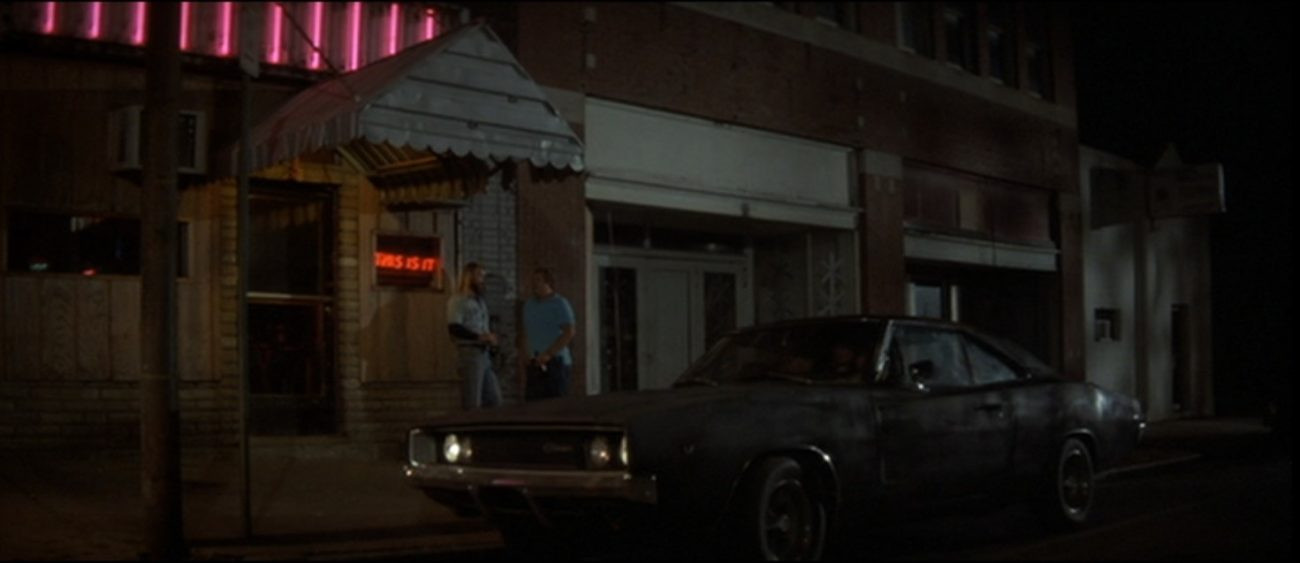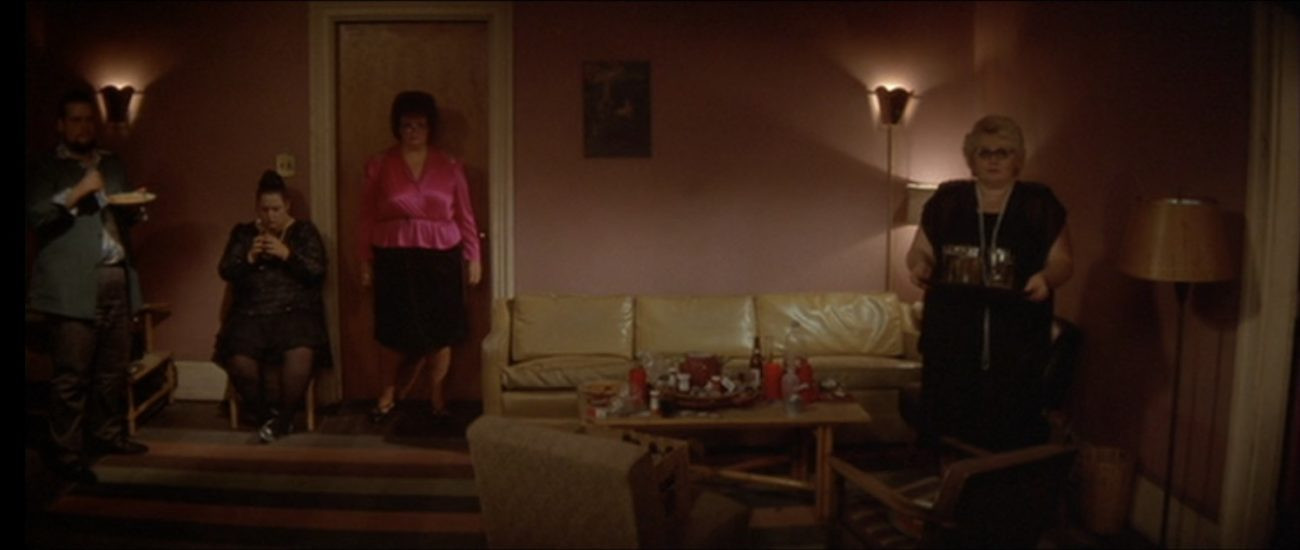My first encounter with Dean Stockwell’s surreal rendition of “In Dreams” was during a viewing of Blue Velvet. I was just 14, and the film, discovered late one summer night with a film-buff friend, Laura, became a pivotal moment in my cinematic awakening. Laura, my guide into the world of David Lynch, started me with Blue Velvet, and then Eraserhead. The impact was profound. Growing up in suburban Indiana, this immersion into arthouse, cult, and world cinema felt like a fast-tracked education in culture and art, a debt I remain grateful for.
From the opening scenes of Blue Velvet, it was clear this was unlike anything I had seen before. Yet, it resonated deeply. The exaggerated Americana – the cheerful firemen, the pristine white picket fences, the vibrant rose bushes – struck me as darkly humorous. Even then, I understood these symbols could mask the harsh realities of addiction, domestic violence, and hidden traumas lurking beneath the surface of suburban tranquility. And the disturbing image of beetles warring beneath a perfect lawn? It felt like a stark, undeniable truth exposed.
 A black 1970s car parks in front of an old brick building. In the front window is a red neon sign that reads
A black 1970s car parks in front of an old brick building. In the front window is a red neon sign that reads
The ominous entrance to Ben’s house, marked by the “This Is It” neon sign, foreshadows the unsettling scene within.
Blue Velvet was both terrifying and mesmerizing. While the film is packed with unforgettable moments, Dean Stockwell’s silent performance of Roy Orbison’s “In Dreams” is the scene that has always lingered most powerfully. Each time I revisit Blue Velvet, I eagerly anticipate this sequence. Upon hearing of Stockwell’s passing, I felt compelled to delve into this scene through writing. It was a way to understand my own fascination with it and to honor Stockwell’s captivating portrayal.
Stockwell’s scene unfolds after Frank Booth (Dennis Hopper) intercepts Jeffrey Beaumont (Kyle MacLachlan) leaving Dorothy Vallens’ (Isabella Rossellini) apartment. Frank and his menacing crew seize Jeffrey and Dorothy, holding them captive and transporting them to Ben’s house. As they arrive, Frank announces, “This is it!” – a phrase echoed by a red neon sign in Ben’s window: “THIS IS IT.” The entrance to Ben’s house, resembling an office building or perhaps a funeral parlor more than a home, contributes to the unsettling atmosphere of Lumberton. In this strange town, even the incongruous seems to fit.
The Artifice of Spectacle: Deconstructing the Scene at Ben’s House
The term “Lynchian” is often used to describe David Lynch’s style, but I find it reductive. Lynch, in my view, is an intensely deliberate filmmaker. Not every detail is symbolic, but Lynch operates intuitively, meticulously choosing objects, colors, and characters to construct the specific world he envisions on screen. To understand the power of Stockwell’s performance, we must first examine the carefully constructed environment of Ben’s house.
As mentioned, the exterior of Ben’s house is far from domestic. The interior amplifies this strangeness. Near the entrance, a painting of a reclining nude woman hangs above a small couch. Faded mint curtains frame the doorway, creating a stage-like effect. The rest of the room includes a larger seating area and a wooden door leading to the hidden room where Dorothy’s son is held. This unseen room, always just out of view, feels like the backstage of a theater, fueling a constant sense of unease and curiosity about what is concealed within.
The walls, painted a faded pink, contribute to the house’s atmosphere of decaying memory, like a half-remembered and poorly reconstructed past. This artificiality enhances the scene’s surreal quality.
 The cast is framed by the wall lamps and faded mint curtains, as if on a stage.
The cast is framed by the wall lamps and faded mint curtains, as if on a stage.
Framed by mint curtains and wall lamps, the scene at Ben’s house is deliberately staged, emphasizing the artificiality and performative nature of the events.
The women in Ben’s house are mostly older, larger women, silent and subservient to Ben, resembling living statues or props rather than active participants. They are like relics of a bygone era, perhaps secretaries or typists from the 1950s, present only to occupy space and serve drinks. One, the thinnest and perhaps oldest, later joins Frank’s group, dancing grotesquely on Frank’s car as he assaults Jeffrey. A large, silent man sits at a long table cluttered with cups, bottles, and pill bottles. The inhabitants seem drugged or in a stupor until the arrival of Frank, his crew, Dorothy, and Jeffrey. They awaken slowly, but remain largely passive, except for Ben.
Upon entering, the main characters are framed by the rectangular doorway and the faded mint curtains, reinforcing the stage-like setting. This deliberate construction reminds the viewer that they are watching a film. It’s as if the film itself is aware of its own artificiality, and the characters are, to some extent, conscious of being observed. Like “Llorando” in Mulholland Drive, Stockwell’s “Blue Velvet Song” performance disrupts the film’s narrative flow, unsettling the characters’ self-assurance and identities.
“In Dreams” as a Disruption: Signaling a Descent into Darkness
After a brief exchange between Frank and Ben, Ben draws Frank aside to discuss business, offering him a crumpled paper and tossing a pill into his mouth. Ben then allows Dorothy to see her son. It is at this moment that Ben begins his silent performance of Roy Orbison’s “In Dreams.” He doesn’t actually sing; instead, he mouths the words, his face painted white like a mime, performing primarily for Frank. The makeshift microphone, a bare light bulb, further emphasizes the staged, consciously constructed nature of the scene. This evokes the “No hay banda” scene in Mulholland Drive, where illusion and reality blur. The performance occurs while Dorothy is with her son, perhaps diverting attention from the gravity of the situation.
 Ben captivates the room without making a sound.
Ben captivates the room without making a sound.
Dean Stockwell’s silent performance of “In Dreams” captivates the room, his mime-like gestures and intense gaze creating a mesmerizing and unsettling spectacle.
As Ben mouths the lyric, “In dreams, you’re mine, all the time,” Frank becomes visibly agitated. Ben, acutely attuned to Frank’s volatile moods, stops miming even before Frank turns off the stereo. The “blue velvet song” performance of “In Dreams” is intentionally left incomplete, hanging in the air.
Frank then confirms a meeting with Ben, pauses, and delivers the recurring, ominous line: “Now it’s dark.” It’s unclear who he addresses, as if he’s commenting on a reality unseen by others. He abruptly shifts, yelling, “Let’s f*ck! I’ll f*ck anything that moves!” and erupts into manic laughter. This outburst, in retrospect, feels directed at the audience, a return to character after the song’s unsettling interruption. He overcompensates, like a cartoonish villain, to regain control and our attention.
Suddenly, Frank and his group vanish, leaving a bizarre tableau: a large doll resembling a woman, wearing a melted clown mask, sits in a chair in the entryway. Above her hangs a portrait of a naked woman, and superimposed on the frame are yellow highway lines. This strange collage feels like Lynch’s signature, a visual punctuation mark, a commentary on visual art itself, or perhaps his unique contribution to it. With this image, we exit Ben’s house, perhaps forever.
When I first saw Blue Velvet, Ben stood out as distinct from the other men. Soft-spoken, adorned in white frills, using a long cigarette holder, he appeared to be the most “cultured” figure in Lumberton. Yet, he also strikes Jeffrey and is complicit in Frank’s violence, revealing a deep darkness beneath his refined façade. He embodies the archetype of the crying clown, masked in luminosity but participating in evil.
Stockwell’s performance serves as a captivating distraction from the brutality, both for the characters and the audience. It acts as a temporary sedative for Frank. For Jeffrey, “In Dreams,” the “blue velvet song” scene, signals a point of no return, a complete immersion into nightmare. Following the song, they leave Ben’s house, and Jeffrey is subjected to even greater horrors at Frank’s hands. He is threatened, beaten, and left in the mud, unconscious. The unfinished song marks the end of Jeffrey’s ability to remain separate from Dorothy’s dark world. Ben’s house and “In Dreams” fully immerse him in darkness, exposing him to experiences that cannot be undone. As the sign declared: This is it.
Each viewing of Blue Velvet heightens my anticipation for Stockwell’s performance. His (silent) singing possesses an elegance, grace, and self-assurance that is mesmerizing. Despite Frank’s terrifying rage, Ben seems to maintain a subtle control within the room. After all, he is harboring the stolen child, the unseen mystery at the heart of the narrative, the innocence that Jeffrey and Dorothy desperately seek to protect and reclaim.
“I Awake To Find You Gone”: The Ephemeral Nature of Dreams and Film
“In Dreams” is fundamentally a song of love and longing, depicting the dream of a beloved and the painful awakening to their absence. Considering the staged, artificial setting of Ben’s house, perhaps the song hints at a deeper sense of loss. Even Stockwell’s performance is a kind of artifice, a silent rendition. Perhaps, for Lynch, the worlds within films are the “beautiful dreams” the song references. Films are inherently ephemeral. We can revisit them, but the credits inevitably roll, and we must leave that world behind. The dream always ends, leaving a residue of sadness in its departure.
 The cast is framed by the wall lamps and faded mint curtains, as if on a stage.
The cast is framed by the wall lamps and faded mint curtains, as if on a stage.
Frank’s captivated gaze at Ben during the “blue velvet song” performance underscores the scene’s hypnotic power and its disruption of the film’s violent tension.
Lynch himself stated that “’In Dreams’ explained to me so much of what the film was all about.” [1] Perhaps the loss embodied in the song is the inevitable parting from a film upon its completion, the melancholy inherent in finishing any significant artistic endeavor. For me, “In Dreams,” this “blue velvet song” moment, narrates a fragile love that culminates in an unavoidable, poignant loss. Whatever its precise meaning, this scene and Blue Velvet continue to captivate me. I remain intrigued by its mysteries, absurdities, and the characters’ desires. The claustrophobic interiors of Dorothy Vallens’ apartment and Ben’s house evoke a palpable discomfort, spaces born from the minds, the deadness, and the pain of their inhabitants, made concrete and tangible. Observing these spaces elicits both curiosity and aversion. I often find myself holding my breath, even knowing what is to come. Blue Velvet relentlessly challenges my sense of self, immersing me in a world that never existed, yet exists vividly on screen, staged and constructed for our unsettling fascination.
For Dean Stockwell (1936-2021)
References
[1] Rodley, C. Lynch on Lynch (Revised Edition), 128, Farrar, Straus, and Giroux, 2005.

